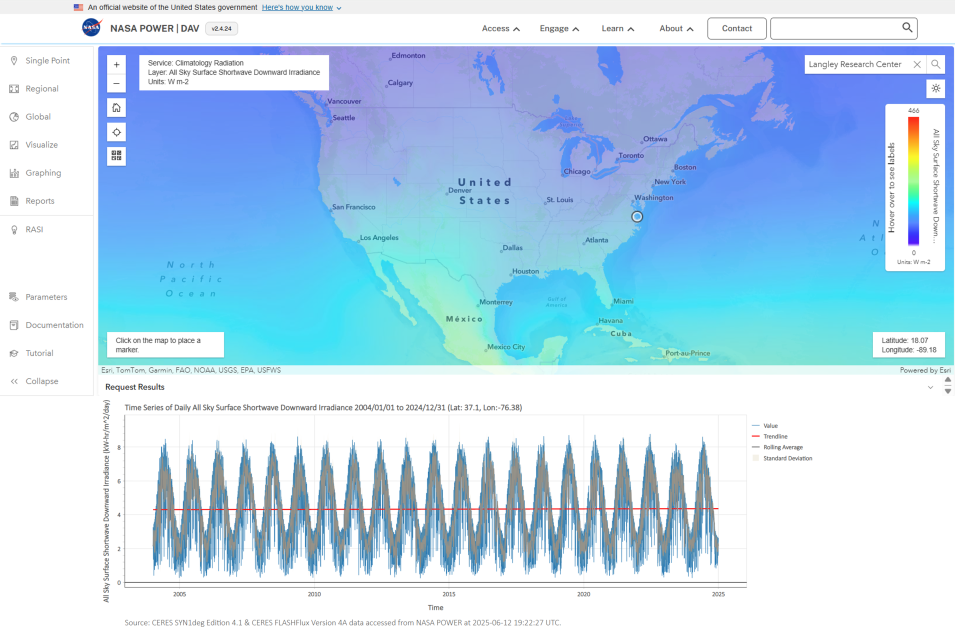The DAV allows users to select one of three user communities—renewable energy, sustainable buildings, or agroclimatology—to tailor data to the choice of the selected community. Users can download data in a variety of formats or view and interact with it directly in the DAV.
A unique feature of the tool is the ability to subset datasets by parameters and area of interest, allowing users to decide which data is most relevant to them. Users can also generate integrated reports to support heating and cooling system implementation to assist in building design and access future weather projections for NASA centers and surrounding areas provided by NASA’s Risk Analysis and Solutions Innovators workgroup.
The data is accessed from POWER's application programming interface (API) and displayed seamlessly within the DAV. Copyable links to the API are provided upon request and require no coding experience, helping organizations, projects, and researchers from across the globe easily access NASA Earth observation data and integrate it into workflows and models that drive energy, building, and agriculture decisions. Examples of some common workflows are:
- Using building climate thermal zones based on American Society of Heating, Refrigerating, and Air-Conditioning Engineers (ASHRAE) standards to help inform sustainable building initiatives.
- Creating quick plots of data parameter anomalies that can be used for initial site assessments.
- Determining monthly average data values based on parameters of interest (e.g., temperature, humidity, or wind speed) for a specific time range.
- Specifying data value ranges using a pixel filter to visualize results directly on the map.
A guided tutorial to help users navigate the tool's basic features is available within the DAV. If you have any questions or issues regarding the DAV, the POWER team closely monitors the project's email inbox and will respond in a timely manner.
The POWER DAV Quick Start documentation and User Guide provide detailed instructions for using the POWER API through the graphical user interface. Additional guides, along with python resources, are available in the POWER API documentation, POWER API pages, and POWER knowledge base Git repository.

